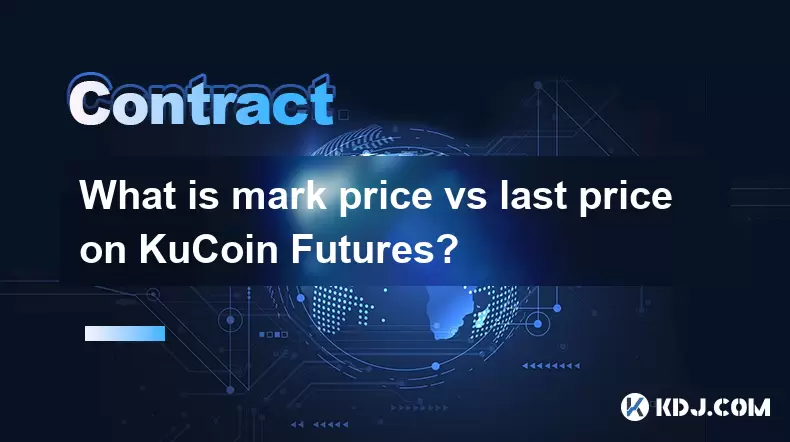-
 Bitcoin
Bitcoin $117700
-0.03% -
 Ethereum
Ethereum $3805
0.49% -
 XRP
XRP $3.098
-1.00% -
 Tether USDt
Tether USDt $1.000
0.03% -
 BNB
BNB $792.8
-1.72% -
 Solana
Solana $177.9
-1.95% -
 USDC
USDC $1.000
0.02% -
 Dogecoin
Dogecoin $0.2202
-1.55% -
 TRON
TRON $0.3278
-2.92% -
 Cardano
Cardano $0.7641
-2.43% -
 Hyperliquid
Hyperliquid $42.21
-2.68% -
 Sui
Sui $3.758
-1.58% -
 Stellar
Stellar $0.4080
-3.21% -
 Chainlink
Chainlink $17.75
-0.33% -
 Bitcoin Cash
Bitcoin Cash $591.8
4.96% -
 Hedera
Hedera $0.2561
-3.09% -
 Avalanche
Avalanche $23.34
-4.24% -
 Litecoin
Litecoin $110.7
1.96% -
 UNUS SED LEO
UNUS SED LEO $8.956
-0.01% -
 Toncoin
Toncoin $3.410
0.79% -
 Ethena USDe
Ethena USDe $1.001
0.03% -
 Shiba Inu
Shiba Inu $0.00001288
-1.82% -
 Uniswap
Uniswap $10.07
-2.06% -
 Polkadot
Polkadot $3.807
-2.27% -
 Monero
Monero $308.2
-2.15% -
 Dai
Dai $1.000
0.03% -
 Bitget Token
Bitget Token $4.521
-0.30% -
 Pepe
Pepe $0.00001134
-1.52% -
 Cronos
Cronos $0.1457
0.65% -
 Aave
Aave $274.9
-2.47%
What is mark price vs last price on KuCoin Futures?
KuCoin Futures uses mark price—a volume-weighted average from major spot exchanges—to prevent unfair liquidations and ensure stable, manipulation-resistant trading. (154 characters)
Jul 30, 2025 at 11:01 am

Understanding Mark Price on KuCoin Futures
Mark price is a crucial mechanism used by KuCoin Futures to ensure fair and stable liquidation processes. Unlike the last traded price, which reflects the most recent transaction, the mark price is a calculated value designed to prevent market manipulation and reduce unnecessary liquidations during periods of high volatility. It is typically derived from the average price of the underlying asset across multiple spot exchanges, such as Binance, Coinbase, and Kraken, weighted by trading volume. This value is updated every few seconds to reflect real-time market conditions.
KuCoin uses the mark price to determine whether a position should be liquidated. If the mark price hits a trader’s liquidation level—even if the last traded price hasn’t—it can trigger a forced closure of the position. This protects the overall health of the futures market by preventing cascading liquidations that could destabilize the system.
What Is Last Price in KuCoin Futures?
The last price simply refers to the price at which the most recent futures contract was traded on KuCoin’s order book. It’s a real-time indicator of where buyers and sellers are currently agreeing to transact. While it gives a snapshot of current market sentiment, it does not account for broader market conditions or potential manipulation through large, isolated trades.
For example, if a whale places a massive sell order that executes at a significantly lower price than the rest of the market, the last price will drop sharply—even if the actual value of the asset hasn’t changed. This is why relying solely on the last price for liquidation decisions would be risky and unfair to traders.
Key Differences Between Mark Price and Last Price
- The mark price is a composite, smoothed value based on external spot markets, while the last price is a single transaction on KuCoin’s futures market.
- Liquidation levels are calculated using the mark price, not the last price, making it more resistant to flash crashes or pump-and-dump schemes.
- Traders may notice a gap between the two prices during high volatility. When this gap widens, it often signals a potential liquidation event or a temporary market imbalance.
- Funding rate calculations also use the mark price to ensure fairness across long and short positions.
Understanding this distinction helps traders avoid confusion when their positions are liquidated despite the last price appearing favorable.
How to View Mark Price and Last Price on KuCoin Futures Interface
To monitor both values in real time: - Log in to your KuCoin Futures account.
- Navigate to the futures trading page for your desired contract (e.g., BTC/USDT perpetual).
Look at the top-left section of the chart area where both prices are displayed:
- The last price appears in large font, often with a color indicator (green for up, red for down).
- The mark price is shown in a smaller box nearby, usually labeled as “Mark Price.”
- Hover over the price chart or check the “Position” tab in your open orders to see how close your liquidation price is to the current mark price.
This visibility allows traders to make informed decisions and adjust leverage or stop-loss levels accordingly.
Why Mark Price Matters for Risk Management
Using the mark price for liquidations ensures that traders are not unfairly liquidated due to temporary price spikes or anomalies. For instance, if the last price drops 10% in a second due to a single large market order, but the mark price only moves 1%, KuCoin will use the 1% movement to assess risk. This prevents cascading liquidations that could otherwise occur if all positions were tied to the erratic last price.Traders should always compare their position’s liquidation price to the mark price, not the last price, when evaluating risk. If the mark price approaches your liquidation level, it’s a warning sign—even if the last price seems far away.
Frequently Asked Questions
Q: Can the mark price be manipulated on KuCoin Futures?
No, because KuCoin pulls data from multiple reputable spot exchanges and applies volume-weighted averaging. A single exchange or actor cannot influence the mark price without also moving the broader market.Q: Why is my position liquidated even though the last price didn’t reach my liquidation level?
Because KuCoin uses the mark price for liquidations. If the mark price hits your liquidation level—regardless of the last price—your position will be closed automatically.Q: Does the mark price affect unrealized PnL calculations?
Yes. KuCoin calculates unrealized profit and loss based on the difference between your entry price and the current mark price, not the last price. This ensures PnL reflects fair market value.Q: Is the mark price updated in real time on KuCoin?
Yes. The mark price is refreshed every 5–10 seconds depending on market activity, ensuring it closely tracks the true value of the underlying asset across major exchanges.
Disclaimer:info@kdj.com
The information provided is not trading advice. kdj.com does not assume any responsibility for any investments made based on the information provided in this article. Cryptocurrencies are highly volatile and it is highly recommended that you invest with caution after thorough research!
If you believe that the content used on this website infringes your copyright, please contact us immediately (info@kdj.com) and we will delete it promptly.
- Retail, Crypto, Visibility: Decoding the Signals in Today's Market
- 2025-07-31 12:31:08
- Bitcoin, Altcoin Selloff, and the FOMC Decision: A Crypto Market Rollercoaster
- 2025-07-31 12:35:33
- Cold Wallet vs. MetaMask: A Crypto Wallet Revolution?
- 2025-07-31 10:30:57
- Bitcoin Casinos in 2025: Instant Payouts and Welcome Bonuses
- 2025-07-31 10:50:33
- Meme Coins in 2025: Token Burns and the Quest for Moonshots
- 2025-07-31 10:50:33
- Unlocking Value: A Deep Dive into Random Year 1 oz Krugerrand Gold Coins
- 2025-07-31 10:57:21
Related knowledge

Why is my Bitstamp futures position being liquidated?
Jul 23,2025 at 11:08am
Understanding Futures Liquidation on BitstampFutures trading on Bitstamp involves borrowing funds to open leveraged positions, which amplifies both po...

How to report Bitstamp futures for taxes?
Jul 30,2025 at 08:35am
Understanding Bitstamp Futures and Taxable EventsWhen trading Bitstamp futures, it’s essential to recognize that these financial instruments are treat...

Does Bitstamp offer inverse contracts?
Jul 23,2025 at 01:28pm
Understanding Inverse Contracts in Cryptocurrency TradingIn the realm of cryptocurrency derivatives, inverse contracts are a specific type of futures ...

What is the difference between futures and perpetuals on Bitstamp?
Jul 27,2025 at 05:08am
Understanding Futures Contracts on BitstampFutures contracts on Bitstamp are financial derivatives that allow traders to speculate on the future price...

How to find your Bitstamp futures trade history?
Jul 23,2025 at 08:07am
Understanding Bitstamp and Futures Trading AvailabilityAs of the current state of Bitstamp’s service offerings, it is critical to clarify that Bitstam...

Can I use a trailing stop on Bitstamp futures?
Jul 23,2025 at 01:42pm
Understanding Trailing Stops in Cryptocurrency TradingA trailing stop is a dynamic type of stop-loss order that adjusts automatically as the price of ...

Why is my Bitstamp futures position being liquidated?
Jul 23,2025 at 11:08am
Understanding Futures Liquidation on BitstampFutures trading on Bitstamp involves borrowing funds to open leveraged positions, which amplifies both po...

How to report Bitstamp futures for taxes?
Jul 30,2025 at 08:35am
Understanding Bitstamp Futures and Taxable EventsWhen trading Bitstamp futures, it’s essential to recognize that these financial instruments are treat...

Does Bitstamp offer inverse contracts?
Jul 23,2025 at 01:28pm
Understanding Inverse Contracts in Cryptocurrency TradingIn the realm of cryptocurrency derivatives, inverse contracts are a specific type of futures ...

What is the difference between futures and perpetuals on Bitstamp?
Jul 27,2025 at 05:08am
Understanding Futures Contracts on BitstampFutures contracts on Bitstamp are financial derivatives that allow traders to speculate on the future price...

How to find your Bitstamp futures trade history?
Jul 23,2025 at 08:07am
Understanding Bitstamp and Futures Trading AvailabilityAs of the current state of Bitstamp’s service offerings, it is critical to clarify that Bitstam...

Can I use a trailing stop on Bitstamp futures?
Jul 23,2025 at 01:42pm
Understanding Trailing Stops in Cryptocurrency TradingA trailing stop is a dynamic type of stop-loss order that adjusts automatically as the price of ...
See all articles

























































































